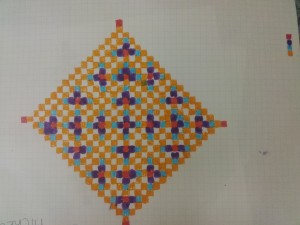I could say: maths is no longer completely maths.
If you compare the statements in the Maths National curriculum (2014) with the questions in the 2016 sample questions (which is when the first children will be assessed on the 204 National Curriculum you find a curious thing: if you only taught children how to do the things in the National Curriculum, they would do badly on the final test.
For example in the old National Curriculum, children were expected to be taught to make decisions about which operations and problem-solving strategies to use. A comparable statement in the new curriculum is that children should be taught to solve problems, including missing number problems, involving multiplication and division, including positive integer scaling problems and correspondence problems in which n objects are connected to m objects. There is currently no statutory guidance in maths for how problem solving should be taught, only that problems should be solved.
But don’t worry, because computing is maths. In fact in the statutory computing curriculum there are statements that describe how to teach problem solving. For example:
- solve problems by decomposing them into smaller parts
- use logical reasoning to explain how some simple algorithms work and to detect and correct errors in algorithms and programs.
In those statements for computing there are clear expectations for how problems can be solved, and I think they apply to maths problems as much as any other subject.
Let’s be clear here. I’m not trying to argue which is the better curriculum; what I am trying to argue is that you can no longer see your children make progress in maths by only teaching maths. You have to teach computing too. Computing is maths.
At the end of the last academic year, like most primary maths subjects leaders I did a maths SATs analysis. What I found was that if our children had solved problems as well as they answered questions about number and calculation, then our school would have been well above average, with the majority of our pupils getting level 5s. As it was, the vast majority of the children scored well into a level 4, but I was left wondering, what if we had taught problem solving just that little bit better…

And now the text of the maths national curriculum is even less focused on problem solving and more on arithmetic competence. Yet the tests in 2016 will be unforgiving to those children who have only learned to crunch numbers.
That is why believe me when I say maths is computing and teach computing with all your heart.
We should proud of our computing curriculum in England. Inspired by the Next Gen report by Ian Livingstone and Andy Howe back in 2011, the computing curriculum could become the envy of the world. If only 5% more of our students become competent at computing, imagine the world powerhouse it would make us. Ian Livingstone describes the ideal ‘A’ level combination for a student going into hi-tech industries as maths, physics and art. Computing is not only produced by both the sciences and the arts but it supports learning in the sciences and the arts.
And that is why, when Melissa shone at the computing workshop with Miles Berry at Microsoft headquarters back in January (as I posted last time), I was delighted. It was not just because of the great confidence she had gained, nor the insight into being able to write a ‘repetition’ in code.
It was not just the big tick in the box marked ‘self esteem’.
It was because by doing good computing she had also done good maths. She had solved a problem that I knew would stand her in good stead in the next few months and beyond. As a remedial teacher it was a win for me, because when Melissa gets better at computing, she also gets better at maths.
Because computing is maths.







